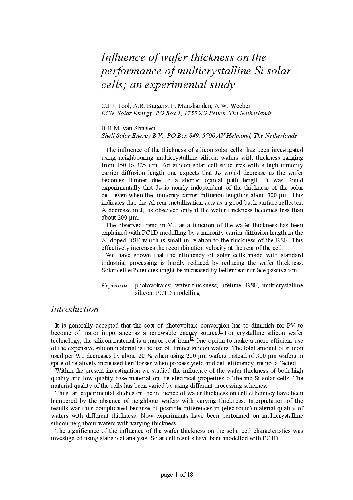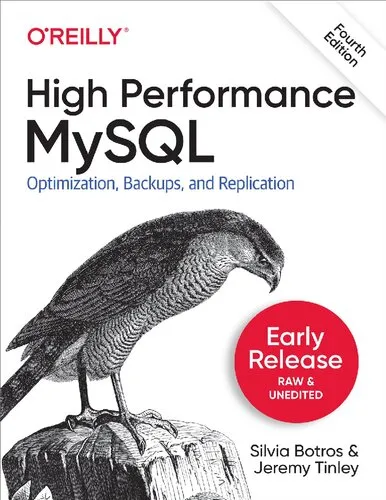Influence of wafer thickness on the performance of multicrystalline Si
5.0
Reviews from our users

You Can Ask your questions from this book's AI after Login
Each download or ask from book AI costs 2 points. To earn more free points, please visit the Points Guide Page and complete some valuable actions.Related Refrences:
Introduction
In the evolving landscape of photovoltaic technologies, multicrystalline silicon (Si) has emerged as a significant player, providing an efficient and cost-effective solution for solar energy conversion. This book, "Influence of Wafer Thickness on the Performance of Multicrystalline Si," explores the intricate relationship between wafer thickness and the overall performance of multicrystalline silicon solar cells. Through a comprehensive analysis, it unveils how seemingly minute physical characteristics can have profound effects on material efficiency and solar energy capture.
Detailed Summary of the Book
The book begins by introducing the reader to the basics of photovoltaic technology and the role of multicrystalline silicon within this framework. It delves into the material properties of multicrystalline silicon, examining how these materials are structured and how they function as photovoltaic converters. Subsequently, the text focuses on the critical aspect of wafer thickness, describing how variations in this parameter can influence the electrical and optical performance of the cells.
The research presented in the book illustrates the balance between cost and efficiency — thinner wafers use less raw material and decrease production costs but may lead to increased fragility and potential decreases in performance. It presents a thorough analysis supported by experimental data and simulations to offer insights into the optimal thickness that balances these trade-offs.
Throughout the book, the authors use a blend of theoretical insights and practical data, making it an invaluable resource for engineers, scientists, and researchers involved in photovoltaic technologies and materials science. Each chapter builds upon the last, allowing readers to develop a comprehensive understanding of the material, ultimately providing guidance for future research and development in this field.
Key Takeaways
- Wafer Thickness Impact: Discover how wafer thickness directly affects the efficiency and cost of multicrystalline Si solar cells.
- Efficiency Vs. Cost: Find optimal thickness ranges that balance cost-effectiveness with performance metrics.
- Future Directions: Insights into potential advancements in wafer technology and solar efficiency enhancements.
- Scientific Methodology: Learn about the experimental setups and simulation techniques employed to derive conclusions.
Famous Quotes from the Book
"In the pursuit of solar efficiency, the thickness of a wafer is not just a dimension; it is a bridge between material science and economic viability."
"Understanding the subtleties of multicrystalline structures allows us to innovate at the intersection of cost and performance."
Why This Book Matters
This book holds significance as it addresses a crucial aspect of photovoltaic technology — the efficient and cost-effective manufacture of solar cells. By focusing on wafer thickness, it touches upon one of the most influential factors governing solar cell performance and production costs. This understanding is key for professionals striving to enhance solar technology to meet the growing demand for sustainable energy sources.
Furthermore, in an era where renewable energy solutions are paramount, the insights provided in this book can help guide future technological advancements, ensuring reliable and widespread adoption of solar power across various sectors. As the world shifts towards sustainable energy, the detailed analysis and research provided in this book are vital resources for stakeholders in both academia and industry.
Free Direct Download
You Can Download this book after Login
Accessing books through legal platforms and public libraries not only supports the rights of authors and publishers but also contributes to the sustainability of reading culture. Before downloading, please take a moment to consider these options.
Find this book on other platforms:
WorldCat helps you find books in libraries worldwide.
See ratings, reviews, and discussions on Goodreads.
Find and buy rare or used books on AbeBooks.
1329
بازدید5.0
امتیاز0
نظر98%
رضایتReviews:
5.0
Based on 0 users review
Questions & Answers
Ask questions about this book or help others by answering
No questions yet. Be the first to ask!













